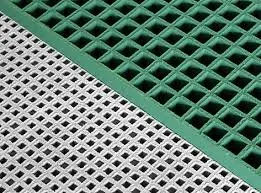
-
 Afrikaans
Afrikaans -
 Albanian
Albanian -
 Amharic
Amharic -
 Arabic
Arabic -
 Armenian
Armenian -
 Azerbaijani
Azerbaijani -
 Basque
Basque -
 Belarusian
Belarusian -
 Bengali
Bengali -
 Bosnian
Bosnian -
 Bulgarian
Bulgarian -
 Catalan
Catalan -
 Cebuano
Cebuano -
 China
China -
 China (Taiwan)
China (Taiwan) -
 Corsican
Corsican -
 Croatian
Croatian -
 Czech
Czech -
 Danish
Danish -
 Dutch
Dutch -
 English
English -
 Esperanto
Esperanto -
 Estonian
Estonian -
 Finnish
Finnish -
 French
French -
 Frisian
Frisian -
 Galician
Galician -
 Georgian
Georgian -
 German
German -
 Greek
Greek -
 Gujarati
Gujarati -
 Haitian Creole
Haitian Creole -
 hausa
hausa -
 hawaiian
hawaiian -
 Hebrew
Hebrew -
 Hindi
Hindi -
 Miao
Miao -
 Hungarian
Hungarian -
 Icelandic
Icelandic -
 igbo
igbo -
 Indonesian
Indonesian -
 irish
irish -
 Italian
Italian -
 Japanese
Japanese -
 Javanese
Javanese -
 Kannada
Kannada -
 kazakh
kazakh -
 Khmer
Khmer -
 Rwandese
Rwandese -
 Korean
Korean -
 Kurdish
Kurdish -
 Kyrgyz
Kyrgyz -
 Lao
Lao -
 Latin
Latin -
 Latvian
Latvian -
 Lithuanian
Lithuanian -
 Luxembourgish
Luxembourgish -
 Macedonian
Macedonian -
 Malgashi
Malgashi -
 Malay
Malay -
 Malayalam
Malayalam -
 Maltese
Maltese -
 Maori
Maori -
 Marathi
Marathi -
 Mongolian
Mongolian -
 Myanmar
Myanmar -
 Nepali
Nepali -
 Norwegian
Norwegian -
 Norwegian
Norwegian -
 Occitan
Occitan -
 Pashto
Pashto -
 Persian
Persian -
 Polish
Polish -
 Portuguese
Portuguese -
 Punjabi
Punjabi -
 Romanian
Romanian -
 Russian
Russian -
 Samoan
Samoan -
 Scottish Gaelic
Scottish Gaelic -
 Serbian
Serbian -
 Sesotho
Sesotho -
 Shona
Shona -
 Sindhi
Sindhi -
 Sinhala
Sinhala -
 Slovak
Slovak -
 Slovenian
Slovenian -
 Somali
Somali -
 Spanish
Spanish -
 Sundanese
Sundanese -
 Swahili
Swahili -
 Swedish
Swedish -
 Tagalog
Tagalog -
 Tajik
Tajik -
 Tamil
Tamil -
 Tatar
Tatar -
 Telugu
Telugu -
 Thai
Thai -
 Turkish
Turkish -
 Turkmen
Turkmen -
 Ukrainian
Ukrainian -
 Urdu
Urdu -
 Uighur
Uighur -
 Uzbek
Uzbek -
 Vietnamese
Vietnamese -
 Welsh
Welsh -
 Bantu
Bantu -
 Yiddish
Yiddish -
 Yoruba
Yoruba -
 Zulu
Zulu
Exploring the Benefits and Applications of FRP Reinforcement in Construction
Understanding FRP Cover Applications, Benefits, and Considerations
Fiber Reinforced Polymer (FRP) cover has emerged as a pivotal innovation in construction and engineering, revolutionizing the way we approach structural integrity and durability. As modern infrastructure continues to evolve with increasing demands for performance, FRP materials have gained recognition for their unique properties and advantages that traditional materials may lack.
What is FRP?
FRP is a composite material made up of a polymer matrix reinforced with fibers, which can be constructed from various materials such as glass, carbon, or aramid. This combination results in a product that possesses high strength-to-weight ratios, corrosion resistance, and versatility, making it an ideal choice for numerous applications across different industries.
Applications of FRP Cover
FRP covers are used in various applications, particularly in environments where exposure to harsh conditions can lead to rapid degradation of traditional materials. Some common uses include
1. Infrastructure FRP is increasingly utilized in bridges, buildings, and tunnels due to its lightweight nature and ability to withstand environmental wear and tear. It can effectively be used as covers for exposed reinforcements and concrete elements, providing an additional layer of protection against moisture and chemicals.
2. Marine Environments The maritime industry benefits significantly from FRP, where corrosion from saltwater can severely impact metal structures. FRP covers can protect essential components, enhancing their longevity and performance.
3. Oil and Gas Facilities In environments where exposure to chemicals is rampant, such as refineries and drilling sites, FRP materials serve as a protective cover to guard against corrosion and chemical damage, extending the lifespan of critical infrastructure.
4. Telecommunications FRP covers are also used to house telecommunications equipment, offering weather resistance and protection from environmental factors while minimizing weight and facilitating easier installation.
Benefits of FRP Cover
The advantages of using FRP covers are numerous and compelling
frp cover

- Corrosion Resistance FRP materials do not rust or corrode easily, making them especially suitable for projects exposed to moisture and chemicals. - Lightweight The reduced weight of FRP compared to traditional materials allows for easier handling, reduced shipping costs, and simpler installation processes.
- High Strength and Durability The intrinsic strength of FRP makes it capable of handling significant loads, providing durability even in high-stress applications.
- Design Flexibility The moldability of FRP allows for diverse shapes and sizes, enabling designers and engineers to innovate and create customized solutions for specific challenges.
- Thermal and Electrical Insulation FRP materials offer excellent insulation properties, making them suitable for applications where thermal and electrical isolation is necessary.
Considerations When Choosing FRP Cover
While FRP covers offer myriad benefits, there are considerations to keep in mind
- Cost Depending on the application and required specifications, FRP can sometimes be more expensive upfront compared to traditional materials. However, the long-term savings in maintenance and replacement can offset these initial costs.
- Installation Expertise Working with FRP requires specific knowledge and skill. It is essential to ensure that the installation is carried out by professionals experienced with these materials to fully leverage their benefits.
- Environmental Impact While FRP offers durability, the disposal and recyclability of polymer composites can be concerns. It’s crucial to consider the lifecycle of the materials and seek options that minimize environmental impact.
Conclusion
FRP cover represents a significant advancement in construction materials, addressing many challenges faced by traditional materials. With their durability, corrosion resistance, and design flexibility, FRP covers are poised to play an essential role in the future of infrastructure and engineering. As industries continue to innovate and demand effective solutions to withstand increasingly harsh conditions, the adoption of FRP technology will likely grow, cementing its place as a cornerstone in modern construction practices.









